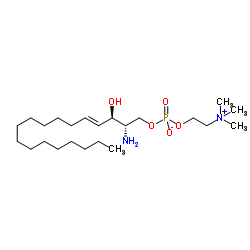Sphingosylphosphorylcholine stimulates CCL2 production from human umbilical vein endothelial cells.
Ha Young Lee, Sun Young Lee, Sang Doo Kim, Jae Woong Shim, Hak Jung Kim, Young Su Jung, Jae Young Kwon, Suk-Hwan Baek, Junho Chung, Yoe-Sik Bae
文献索引:J. Immunol. 186 , 4347-53, (2011)
全文:HTML全文
摘要
Sphingosylphosphorylcholine (SPC) is a component of high-density lipoprotein particles. We investigated the functional role of SPC in HUVECs. SPC stimulation induced production of the CCL2 chemokine in a PTX-sensitive G-protein-dependent manner. SPC treatment caused the activation of NF-κB and AP-1, which are essential for SPC-induced CCL2 production, and induced the activation of three MAPKs, ERK, p38 MAPK, and JNK. Inhibition of p38 MAPK or JNK by specific inhibitors caused a dramatic decrease in SPC-induced CCL2 production. The Jak/STAT3 pathway was also activated upon SPC stimulation of HUVECs. Pretreatment with a Jak inhibitor blocked not only SPC-induced p38 MAPK and JNK activation, but also NF-κB and AP-1 activation. Our results suggest that SPC stimulates HUVECs, resulting in Jak/STAT3-, NF-κB-, and AP-1-mediated CCL2 production. We also observed that SPC stimulated expression of the adhesion molecule ICAM-1 in HUVECs. Our results suggest that SPC may contribute to atherosclerosis; therefore, SPC and its unidentified target receptor offer a starting point for the development of a treatment for atherosclerosis.
相关化合物
| 结构式 | 名称/CAS号 | 分子式 | 全部文献 |
|---|---|---|---|
 |
D-赤藓-鞘氨醇磷酸胆碱;神经鞘氨醇磷酸胆碱
CAS:1670-26-4 |
C23H49N2O5P |
|
Sex-dependent decrease of sphingomyelinase activity during a...
2014-01-01 [Cell Physiol. Biochem. 34(1) , 71-81, (2014)] |
|
A novel trigger for cholesterol-dependent smooth muscle cont...
2015-05-01 [J. Cereb. Blood Flow Metab. 35 , 835-42, (2015)] |
|
EDG3 is a functional receptor specific for sphingosine 1-pho...
1999-06-24 [Biochem. Biophys. Res. Commun. 260 , 203-8, (1999)] |
|
Novel neurotrophic effects of sphingosylphosphorylcholine in...
2007-12-07 [Biochem. Biophys. Res. Commun. 364 , 163-8, (2007)] |
|
Molecular diversity of sphingolipid signalling.
1997-06-23 [FEBS Lett. 410 , 34-38, (1997)] |